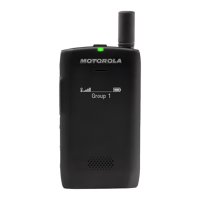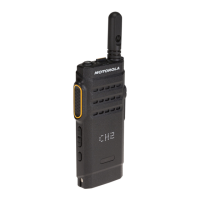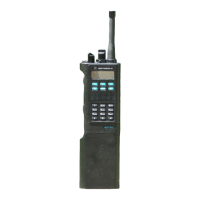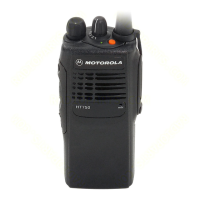Glossary
Air Interface Encryption (AIE) The
Dimetra IP System supports Over-the-Air
Standard Encryption of radios and Base Stations
using the standard TETRA algorithms TEA1,
TEA2 and TEA3.
See also: Encryption
Base Station A fixed RF transceiver used in
wireless voice and data communications.
See also: Base Transceiver Subsystem
Base Transceiver Subsystem (BTS) A
Base Station serving as the Radio Frequency
(RF) interface between the radios and the
system infrastructure.
Control Channel A dedicated channel at a
site on which radios send and receive
instructions for call processing.
Central Network Equipment The
equipment located at the Master Site or Mobile
Switching Office.
Customer Programming Software
(CPS) Computer-based software which allows
the programming of the radio's characteristics
(for example, frequency, DPL codes, and alias).
Direct Mode Operation (DMO) Direct
communications between two or more radios
without the use of any infrastructure.
Encryption Using ciphers to alter information
before it is transmitted over a network.
Encryption ensures, to the greatest extent
possible, that messages cannot be read or
altered during transmission.
Local Site Trunking (LST) When a
system fails or many of the sites lose connection
to the CNE, the sites are designed to go into a
fall back situation known as Local Site Trunking
(LST). When the sites are forced to go into LST,
the radios (users) are randomly distributed
across all the sites and communication between
radios is dependant on at which site they are
registered. Only radios registered at a particular
site can communicate to each other.
See also: Central Network Equipment
Dynamic Group Number Assignment
(DGNA) DGNA is a possibility to provision
talkgroups into the radio over the Air Interface.
See also: Talkgroup
Push-to-Talk A method by which a radio
user initiates or joins a call. When the user
presses the PTT button (also known as keying
up), the radio sends data to the network
infrastructure to request call services.
Motorola Telephone Interconnect
Gateway (MTIG) The MTIG acts as a
gateway in the TI architecture and provides
transcoding of voice between the external PBX
and the Dimetra IP network.
See also: Private Automatic Branch Exchange,
Telephone Interconnect
Mobile Network Code Allocated by the
national authority that allocates frequency
assignments in a country and should be
requested from that authority at the same time as
frequency allocations are requested. The MCC
and MNC together form a unique TETRA system
identifier that is broadcast by a Dimetra system
over the air interface.
See also: Mobile Country Code
Mobile Country Code The 3 digit (12 bits)
Mobile Country Code identifies uniquely the
country of the mobile subscriber. Within an IMSI,
the first 3-digit contains the MCC information. A
mobile country code (MCC) is used in
combination with a mobile network code (MNC)
to uniquely identify a mobile network operator
(carrier) using the GSM (including GSM-R),
UMTS, TETRA, and LTE public land mobile
networks.
See also: Mobile Network Code
Glossary
Send Feedback 81

